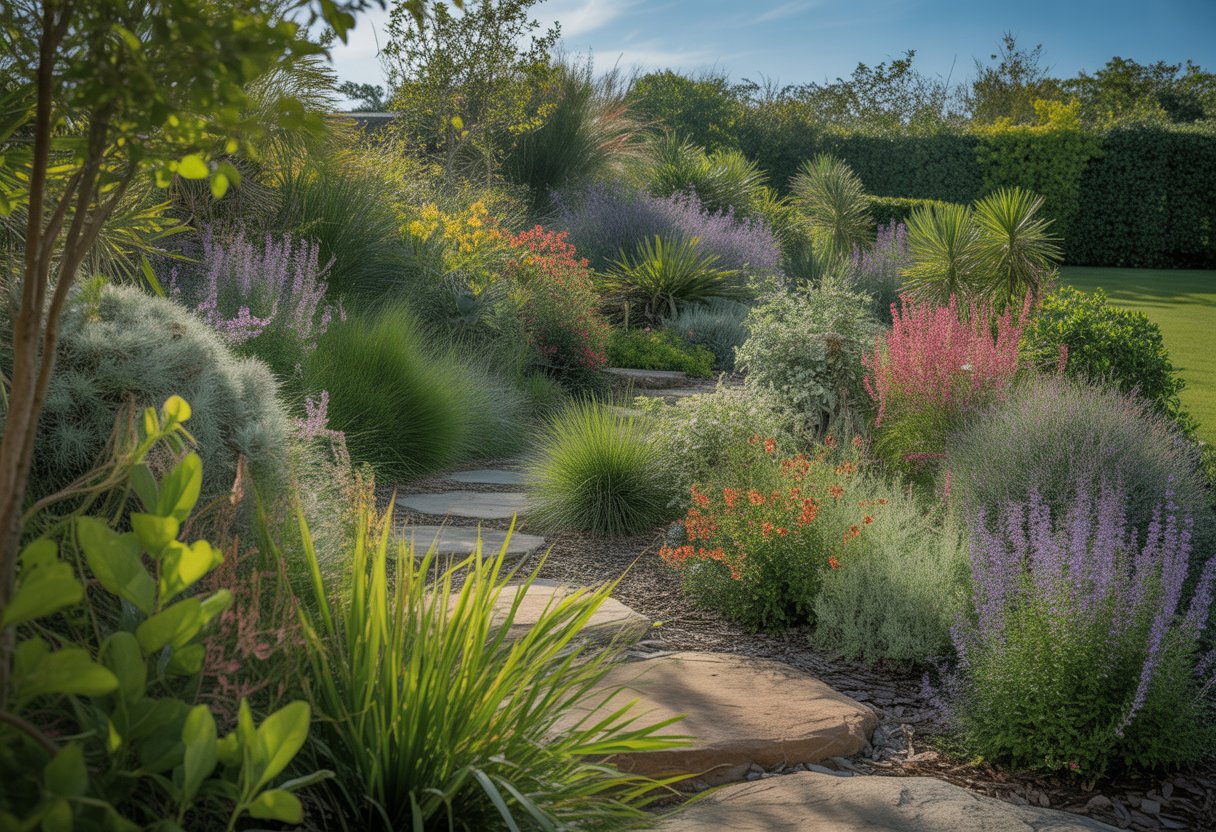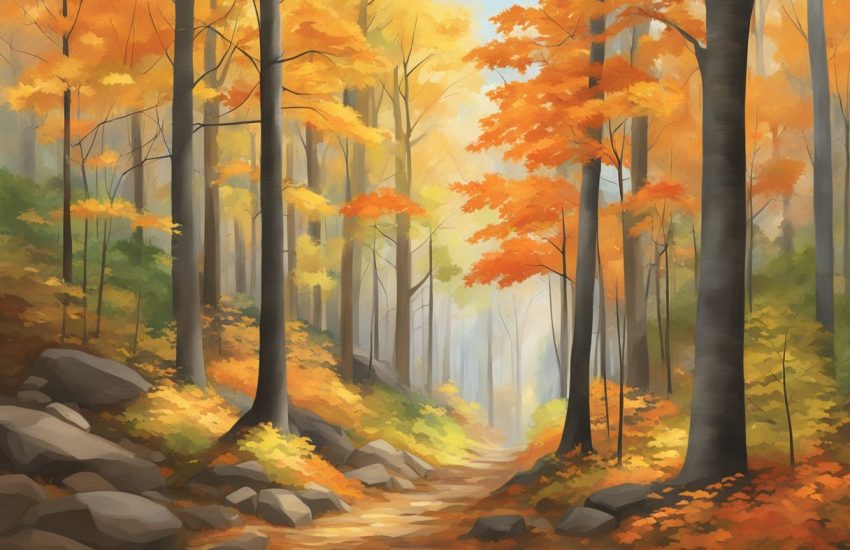Ornamental Native Plant for Landscaping Enhances Sustainable Garden Design
Ornamental native plants really bring something special to landscaping. They thrive in local conditions and need less water and maintenance than non-native species.
Choosing native plants enhances biodiversity while creating visually appealing garden spaces.

These plants often offer seasonal interest—think flowers, unique foliage, or even just a cool texture. They’re pretty versatile, fitting into all sorts of design styles.
Native ornamentals also support local wildlife, like pollinators and birds, which adds real ecological value to your landscape.
Using native ornamentals fits right in with environmentally responsible gardening. Gardeners cut down on chemical treatments and conserve resources, so it’s a win for modern landscaping.
Benefits of Ornamental Native Plants in Landscaping

Ornamental native plants do more than just look good. They support environmental balance, help wildlife, and need less intensive care.
That’s why they’re such a solid choice for sustainable landscaping.
Ecological Advantages
Native plants adapt to their local ecosystems, so they thrive with little fuss. Their deep roots stabilize soil and prevent erosion.
This helps reduce runoff and supports healthier watersheds. Their presence keeps natural plant communities intact and supports ecosystem functions.
Unlike many exotic species, natives don’t throw local habitats out of whack. They usually resist regional pests and diseases, so gardeners can skip a lot of the chemical treatments.
Supporting Native Wildlife
Native plants create essential habitats for wildlife—birds, butterflies, native bees, you name it. They offer the food and shelter that non-natives often just can’t provide.
Pollinators rely on native flowers for nectar and pollen. Butterflies and bees especially benefit from species that bloom at different times, so there’s always something to eat.
As wildlife habitats, native plants support species that need specific plants for nesting or raising their young. Landscaping with natives keeps these relationships going strong.
Sustainability and Low Maintenance
Ornamental natives are usually drought tolerant, since they evolved to handle the local climate. This cuts down on water use and irrigation.
They don’t need much fertilizer or pesticides because they’re already adapted to local soils and weather. That means lower maintenance costs and a lighter environmental footprint.
Native plants just fit better with the region’s conditions. Gardeners get healthier plants and less work—what’s not to like?
Top Ornamental Native Plant Species for Landscaping
Native species bring durability and ecological perks, all while making gardens look great. The best choices depend on what you want—form, bloom time, or how the plant functions in your space.
Perennials and Grasses
Perennials like yarrow offer lasting foliage and flowers that attract pollinators. Little bluestem and muhly grass are favorite native grasses for their texture and the way they change color with the seasons.
These plants handle a range of soil types and don’t need much water once they settle in. Yarrow’s clusters of white or yellow flowers stick around all summer, while muhly grass puts on a showy pink-purple display in fall.
Flowering Shrubs and Trees
Flowering shrubs such as wild rose bring color and fragrance to borders or hedges. The desert willow stands out as a native tree with a graceful shape and trumpet-like flowers that pop from late spring into summer, drawing in hummingbirds.
These species do well in California native plant gardens and adjust to different climates. They offer shade, habitat, and a boost in landscape diversity.
Annuals and Wildflowers
California poppy is a classic native annual with vibrant orange blooms. It’s drought-tolerant and loves sunny, well-drained spots.
Showy milkweed works as both an ornamental and a crucial host plant for monarch butterflies. Wildflowers add seasonal color and help pollinators, keeping native biodiversity alive and giving gardens a lively, natural vibe.
Design Principles and Best Practices for Native Plant Landscaping

Native plant landscaping works best with thoughtful arrangement, smart water management, and a focus on ecological balance. Putting the spotlight on drought tolerance and habitat creation leads to sustainable, good-looking spaces.
Creating Habitat-Friendly Landscapes
A habitat-friendly landscape uses native plants to support wildlife. Mixing shrubs, grasses, and wildflowers brings in pollinators, birds, and helpful insects.
Layered vegetation mimics local woodlands, offering shelter and food. Skipping pesticides and reducing turf areas protects these habitats even more.
Native plants that fit the region’s environment establish quickly, so you don’t have to fuss with irrigation or soil fixes. Adding logs, rocks, or water features bumps up habitat diversity.
Utilizing Drought-Tolerant Plants
Picking drought-tolerant natives slashes water use and makes landscapes tougher. Species like Echinacea, Salvia, and native grasses handle dry spells without much help.
Drought tolerance varies, depending on soil and microclimate. Grouping plants with similar water needs helps avoid overwatering.
Mulch keeps soil moist and moderates temperature. During long dry periods, it’s worth checking on plants to make sure they’re holding up, but don’t go overboard with watering.
Implementing Xeriscaping Techniques
Xeriscaping uses drought-tolerant plants and water-wise design to cut down on irrigation. Key moves include improving soil, using efficient irrigation, and picking plants that match local rainfall.
Hardscape features like gravel paths or permeable pavers help reduce runoff and erosion. Shaping plant beds with gentle slopes lets rainwater soak in.
Native xeriscapes cost less to maintain and look great, echoing the local ecosystem. It’s a big shift from thirsty lawns and gardens packed with non-native plants.
Transitioning from Non-Native to Native Gardens
Swapping non-native plants for natives takes some planning. Gradually removing invasive or high-water plants eases the transition for your landscape and soil.
Start by picking native plants that fill the same visual or ecological roles as the ones you’re replacing. Mixing them in with existing plants helps wildlife and gardeners adjust.
Testing and amending soil can help natives get established, especially if the area was dominated by non-natives before. Take it step by step, so you can see what’s working and tweak things as you go.
Cultivation, Care, and Maintenance of Ornamental Native Plants

Good soil preparation, watering routines, and fertilization make a huge difference for native plants. Smart pest management and seasonal care help keep growth and flowering on track.
Soil, Watering, and Fertilization Needs
Most native plants like well-drained soil, similar to their natural habitats. Adding organic matter can improve soil structure and help hold nutrients, but don’t go overboard—natives don’t need rich soil.
Avoid overwatering to prevent root rot. Most natives handle moderate drought once they’re established.
Water deeply but not too often, encouraging deep roots. Early morning watering cuts down on evaporation and disease.
Use slow-release fertilizers with balanced nutrients, especially phosphorus and potassium, to help flowering and roots. Skip excess nitrogen—it might push leaf growth but won’t help flowers or nectar.
Managing Pests and Diseases
Native plants draw in beneficial insects like caterpillars, which are great for local ecosystems. Of course, some pests show up and can damage foliage or flowers.
Check plants regularly so you can catch any problems early. Use targeted pesticides only if you really have to, and if possible, stick with organic or low-toxicity options to protect pollinators.
Encourage natural predators like ladybugs and lacewings to keep pests in check. Pull off diseased leaves and give plants enough space for good air flow, which helps keep fungal issues at bay.
Seasonal Gardening and Plant Propagation
Seasonal pruning helps keep plants in shape and sparks fresh growth. Most native plants really love a light trim after they flower.
Snipping off spent blooms and deadwood does more than tidy up; it supports nectar production for pollinators. That’s a win for bees and butterflies.
When it comes to propagation, seeds and cuttings are the usual go-to methods. Seeds might need a little coaxing—stratification or scarification—to wake them up from dormancy.
If you take cuttings in late spring and use some rooting hormone, you’ll probably get better results. Keeping your planting schedule in sync with your local climate? That’s honestly the secret sauce for better survival rates.


